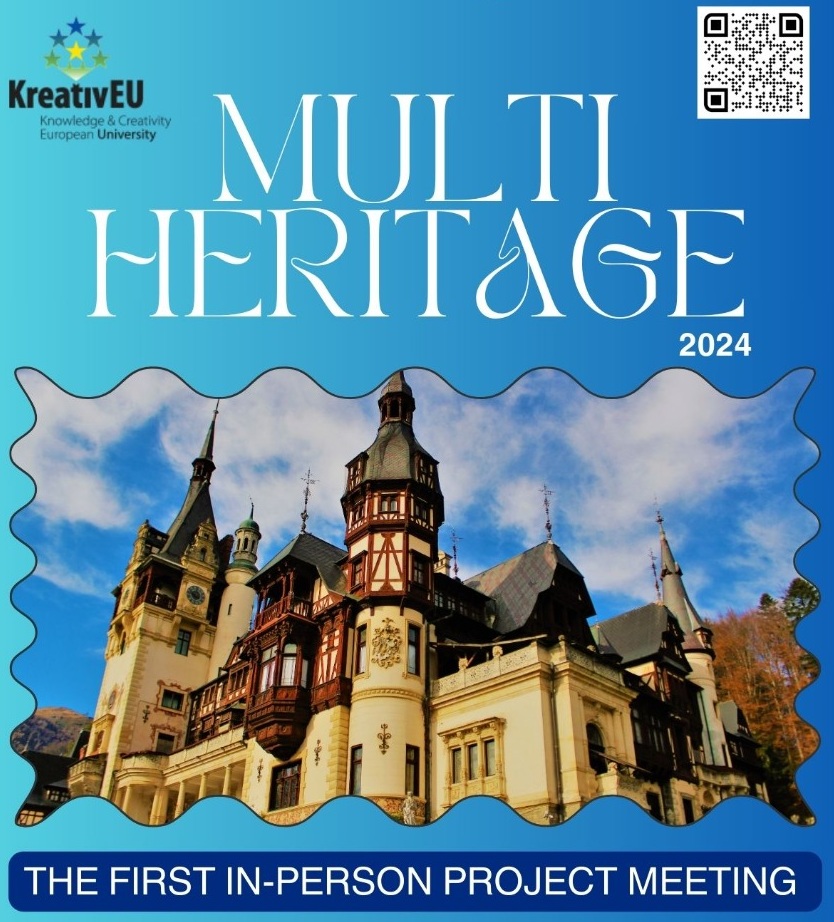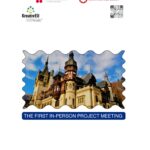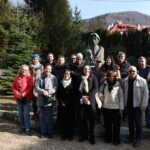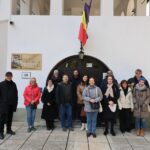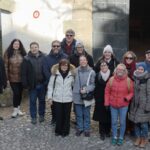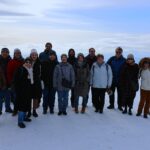PRESS RELEASE
17 February 2025
Multi-Heritage2024 Project Meeting in Sinaia: A Multidisciplinary Approach to Heritage Preservation
Sinaia, Romania – The Multi-Heritage2024 project, officially launched under the Erasmus+ Programme (Project Number: 101180427), brings together leading European institutions to develop an innovative master’s programme focused on heritage preservation. The initiative, running from November 1, 2024, to January 31, 2026, aims to integrate multidisciplinary approaches in heritage studies, enhance academic cooperation, and foster international mobility among students and faculty.
From February 12–15, 2025, key partners convened in Sinaia for the first project meeting, laying the foundation for the programme’s governance, accreditation strategy, and curriculum design. Discussions centered on structuring the MultiHeritage Mundus Master Programme to meet international academic standards and labor market needs. The meeting also included field visits to significant heritage sites such as the Peles National Museum, Prejmer Saxon Fortified Church and the George Enescu Memorial House.
The project aims to integrate state-of-the-art digital methodologies, conservation theories, eco-cultural heritage perspectives, and gamification strategies into its curriculum. Additionally, it will foster cross-border collaboration and mobility, allowing students to gain hands-on experience in heritage sites across multiple countries.
During the recent project meeting in Sinaia, Romania (February 12-15, 2025), key decisions were made regarding governance, accreditation, curriculum development, and student mobility. A unified accreditation model was agreed upon, ensuring a single diploma jointly issued by all partner universities. The curriculum will feature modular teaching, co-chaired courses, and interdisciplinary learning pathways, with students required to study in at least three different countries.
The programme will emphasize practical training, internships, and international fieldwork, offering students direct engagement with heritage sites and institutions. Admission criteria, including language proficiency at B2 level and a flexible enrollment system, have been established to ensure accessibility and academic excellence.
With the next steps focusing on finalizing the curriculum structure, defining mobility pathways, and strengthening institutional partnerships, the Multi-Heritage2024 project is poised to become a benchmark for heritage education in Europe and beyond, fostering cross-border academic cooperation and equipping future professionals with the necessary skills to preserve and promote Europe’s cultural heritage.
The meeting concluded with a commitment to advancing the MultiHeritage Mundus Master Programme, ensuring it aligns with best practices, industry needs, and cutting-edge heritage education methodologies.


